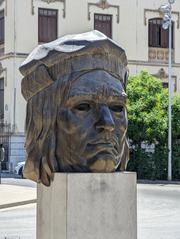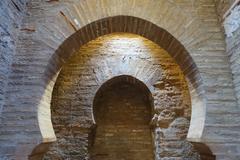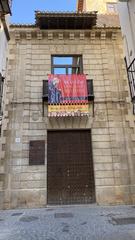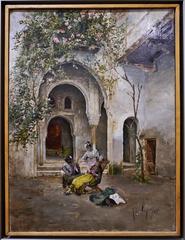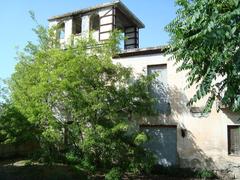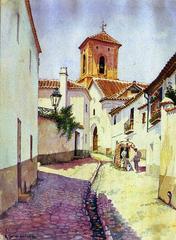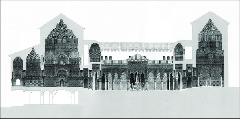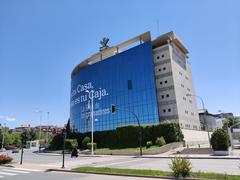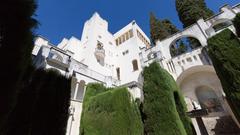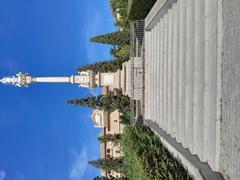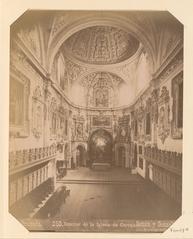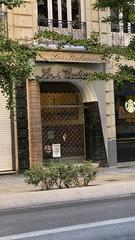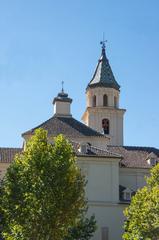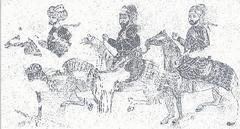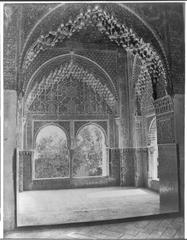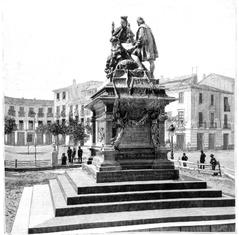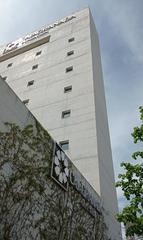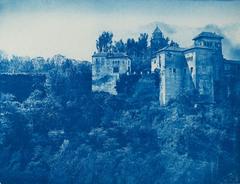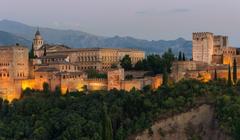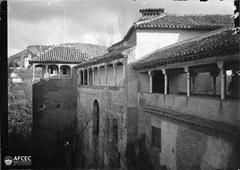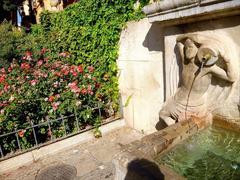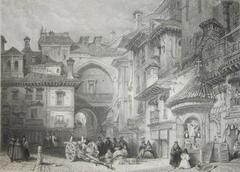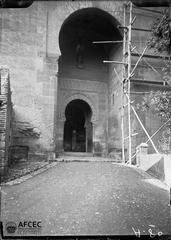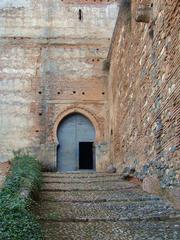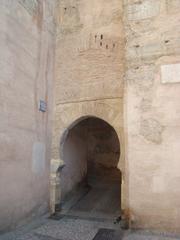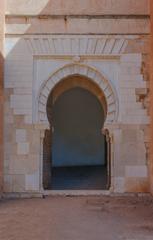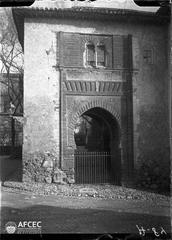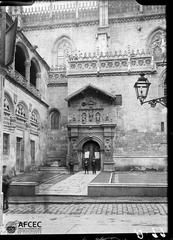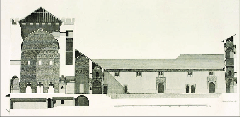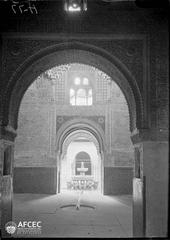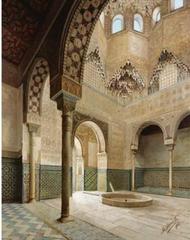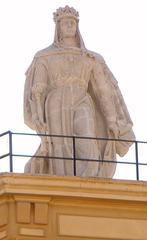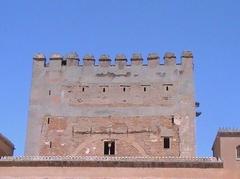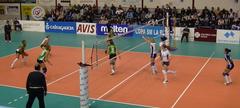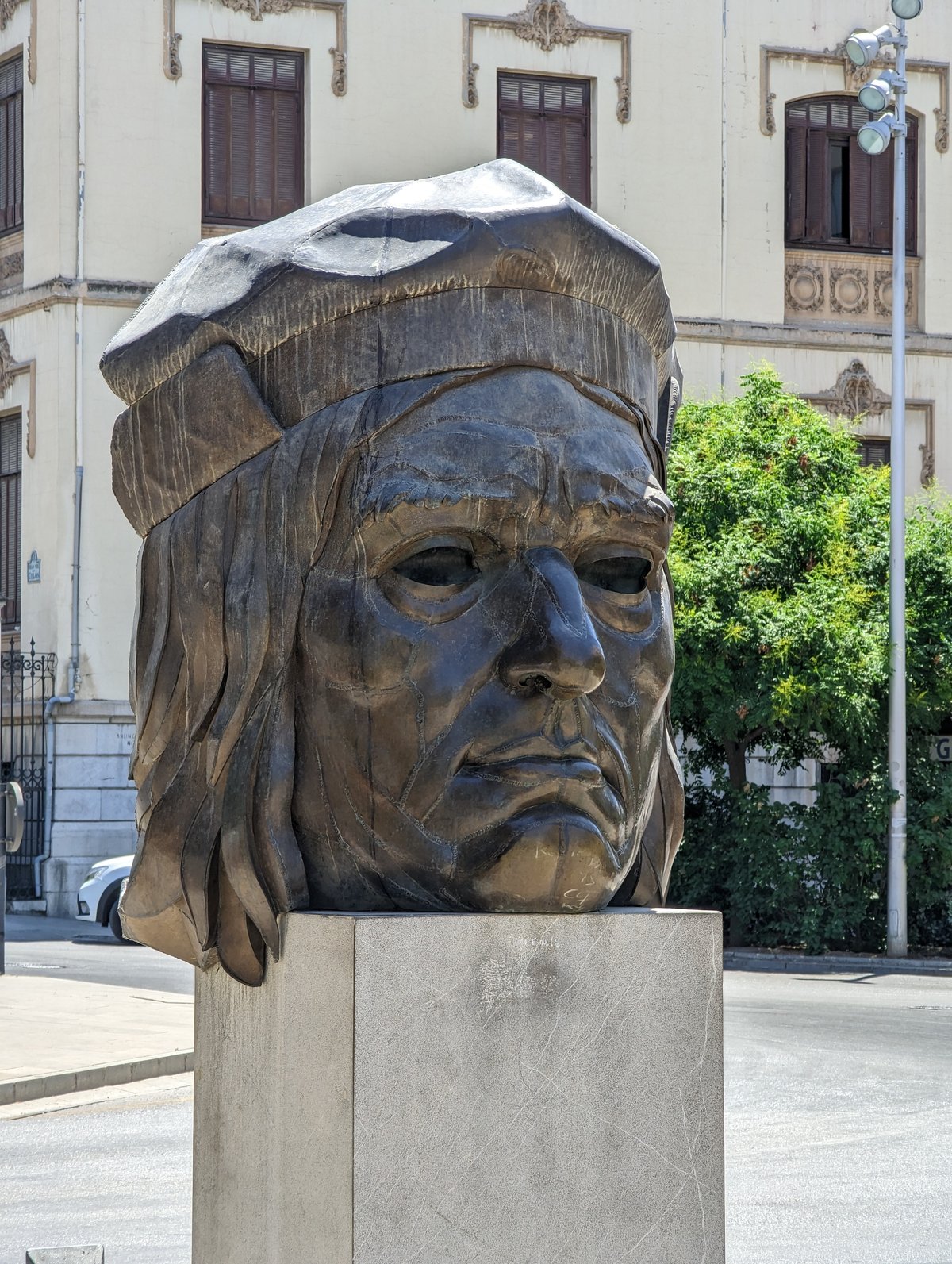
Monument to Gonzalo Fernández de Córdoba in Granada, Spain – Visiting Hours, Tickets, and Comprehensive Guide
Date: 14/06/2025
Introduction
Granada, a city renowned for its rich cultural tapestry and historical heritage, is home to the Monument to Gonzalo Fernández de Córdoba—“El Gran Capitán.” This monument commemorates one of Spain’s most pivotal military strategists, whose innovations not only shaped the outcome of the Reconquista but also set the stage for Spain’s military dominance during the Renaissance. The monument can be admired both as a grand tomb within the Monastery of San Jerónimo and as a striking bronze statue in the heart of Granada, reflecting the city’s profound connection to Spain’s past (Britannica; Miriam Tourist Guide; Granada City Council).
This guide provides an in-depth overview of the monument’s history, artistic significance, visitor information, and tips for making the most of your visit to this emblem of Granada’s historical legacy.
Table of Contents
- Historical Profile: Gonzalo Fernández de Córdoba
- The Monument: Location, Setting, and Artistic Features
- Visitor Information
- Visitor Experience and Practical Advice
- References and Further Reading
Historical Profile: Gonzalo Fernández de Córdoba
Early Life and Noble Origins
Gonzalo Fernández de Córdoba was born on September 1, 1453, in Montilla, Andalusia, to an aristocratic family led by Pedro Fernández de Córdoba, Count of Aguilar. Receiving early guidance in leadership and chivalry, he became a page at the Castilian court, serving Prince Alfonso and later Princess Isabella, who would become Queen Isabella I (Academia-Lab; Britannica).
Military Career and the Conquest of Granada
Gonzalo’s military ascent began during the civil strife following Isabella’s accession and was cemented in the campaign against the Nasrid Kingdom of Granada. His strategic prowess and valor were evident in sieges such as Loja, Tajara, Íllora, and Montefrío—with accounts noting his courage in being among the first to scale fortified walls (Wikipedia).
His fluency in Arabic and rapport with Boabdil, the last Nasrid Sultan, made him vital in negotiating Granada’s peaceful surrender in 1492, a milestone marking the end of Muslim rule in Iberia and the completion of the Reconquista (Britannica).
Innovations in Military Tactics
Fernández de Córdoba was a pioneer in military modernization. He introduced gunpowder artillery, restructured infantry tactics, and integrated pikemen and arquebusiers into flexible formations. These innovations led to the development of the Spanish “tercios,” renowned across Europe (Biographs.org; Wikipedia).
The Italian Campaigns and International Prestige
After Granada, Gonzalo led Spanish forces in the Italian Wars, earning victories in Naples and becoming its Viceroy. He was granted numerous noble titles and was sought after for his diplomatic skills by European powers (Academia-Lab). Chroniclers described him as “the most esteemed person that lived in these times” (Wikipedia).
Later Years and Legacy
Gonzalo spent his final years in Granada, serving as mayor of Loja until his death in 1515. Though his tomb was desecrated during the Peninsular War, his legacy as a military innovator and national hero endures. The Spanish Legion’s 3rd regiment bears his name, and he remains a symbol of chivalry and tactical brilliance (Academia-Lab).
The Monument: Location, Setting, and Artistic Features
Monastery of San Jerónimo and Main Tomb
The most significant monument to Gonzalo Fernández de Córdoba is his tomb within the Monastery of San Jerónimo, a Renaissance landmark in Granada’s center. Commissioned by his wife, María Manrique de Figueroa y Mendoza, and supported by Emperor Charles V, the monument is a masterpiece of Spanish Renaissance art (Granada Only; Miriam Tourist Guide).
Artistic Highlights:
- Main Chapel and Altarpiece: Features a minerist altarpiece with scenes from Fernández de Córdoba’s life, classical motifs, and narrative reliefs that celebrate his virtues and victories.
- The Tomb: Recumbent effigies of the Gran Capitán and his wife, richly adorned heraldic symbols, and Latin inscriptions extolling his legacy.
- Decorative Program: Classical motifs, allegories of virtues, and battle scenes reflecting his military achievements (Encyclopedia.com).
Plaza de las Pasiegas Bronze Statue
A second, more modern monument—a bronze statue by Mateo Inurria, erected in 1923—stands in Plaza de las Pasiegas, near Granada Cathedral. This statue depicts Fernández de Córdoba in military regalia, symbolizing his enduring influence and offering a focal point in the city’s urban landscape (Granada City Council).
Artistic Program and Symbolism
The monuments combine Renaissance and Gothic influences, using materials such as marble, gilded wood, and polychrome sculpture. Allegorical figures, classical motifs, and detailed reliefs encapsulate the ideals of chivalry, faith, and military innovation.
Visitor Information
Visiting Hours and Tickets
Monastery of San Jerónimo:
- Hours: Tuesday to Sunday, 10:00 AM – 6:00 PM. Closed Mondays and public holidays.
- Tickets: Adults €5–€8; discounts for students, seniors, and children. Purchase onsite or online (ticketsgranadacristiana.com).
Plaza de las Pasiegas Statue:
- Hours: Public square, accessible 24/7. Best visited during daylight.
Directions and Transportation
- Monastery: Short walk from Granada’s center; reachable via bus lines C1 and C2. Limited nearby parking.
- Plaza de las Pasiegas: Central, pedestrian-friendly location; accessible by foot, bus, or taxi (Granada Transport).
Accessibility
Both sites are wheelchair accessible, with ramps and smooth pathways. Some historic sections of the monastery may pose minor challenges.
Guided Tours and Events
Daily guided tours are available at the monastery and can offer deeper historical and artistic context. Special commemorations for the Gran Capitán are held annually, featuring lectures and cultural activities.
Photography and Viewing Tips
Photography is permitted (no flash inside the chapel). The best light for photos is in the morning. Be respectful, especially near the tomb.
Nearby Attractions
- Alhambra: Granada’s world-famous palace-fortress.
- Granada Cathedral: Renaissance masterpiece adjacent to Plaza de las Pasiegas.
- Royal Chapel: Burial site of Ferdinand and Isabella.
- Albaicín District: Historic Moorish quarter.
Amenities and Safety
The surrounding areas are well-served by cafés, shops, and public facilities. The sites are safe, with a visible police presence, but visitors should remain alert for pickpocketing during peak times.
Visitor Experience and Practical Advice
Best Times to Visit
Early morning or late afternoon offers fewer crowds and better lighting. Spring and autumn are ideal seasons, avoiding the summer heat and winter chill.
Cultural Insights and Local Engagement
The monuments are integral to Granada’s identity. Locals celebrate the Gran Capitán’s legacy through commemorative events, and the sites are popular meeting points and starting locations for historical tours.
Practical Tips
- Wear comfortable shoes for exploring cobblestone streets.
- Check for local events or festivals that may affect opening times.
- Use translation apps or book guided tours for non-Spanish speakers.
- Respect the solemnity of the tomb and religious spaces.
Frequently Asked Questions (FAQ)
Q: What are the visiting hours for the Monastery of San Jerónimo (Gran Capitán’s tomb)?
A: Tuesday to Sunday, 10:00 AM to 6:00 PM; closed Mondays and public holidays.
Q: Is the Plaza de las Pasiegas statue accessible at all times?
A: Yes, it is located in a public square and accessible 24/7.
Q: Are tickets required?
A: The monastery requires paid entry; the plaza statue does not.
Q: Are guided tours available?
A: Yes, at the monastery; booking ahead is recommended.
Q: Is the site wheelchair accessible?
A: Yes, with minor limitations in older sections of the monastery.
Q: Can I take photographs?
A: Yes, but avoid flash inside the chapel and be respectful of other visitors.
Summary and Recommendations
The Monument to Gonzalo Fernández de Córdoba is a cornerstone of Granada’s historical and cultural landscape. Whether you are drawn to the serene artistry of the Monastery of San Jerónimo or the commanding presence of the bronze statue in Plaza de las Pasiegas, a visit provides profound insights into Spain’s military, artistic, and civic heritage. The sites are accessible, conveniently located near other key attractions, and enriched by informative tours and digital resources. Enhance your experience by planning ahead, respecting local customs, and taking advantage of the wealth of history Granada has to offer (Granada Only; Granada Tourism).
References and Further Reading
- Britannica
- Academia-Lab
- Miriam Tourist Guide
- Granada Only
- Wikipedia
- ticketsgranadacristiana.com
- Granada City Council
- Granada Tourism
- Encyclopedia.com
- Catholic Magazine
- Granada Hoy
